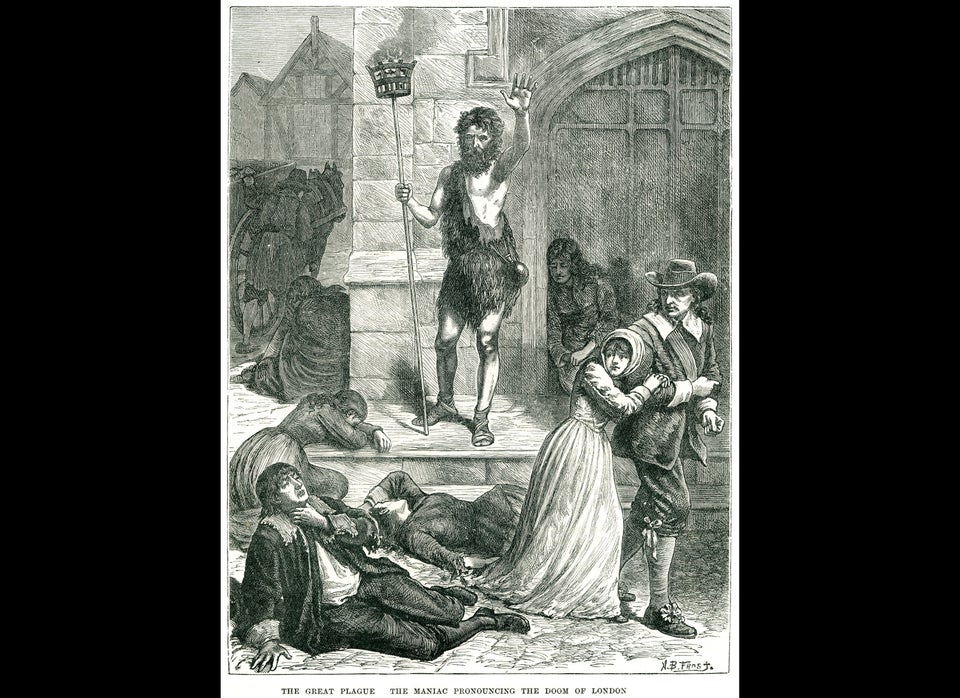The condom protects us from infection and unwanted pregnancy, and it has reshaped the history of sex across the world. Studying its strange past can teach us a lot about our changing attitudes toward sexual intimacy throughout the ages.
To learn more, I reached out to Sarah Forbes, curator of the Museum of Sex in New York City. Check out the video above and don't forget to sound off by leaving a comment at the bottom of the page. And keep it clean, people! Come on, talk nerdy to me!
CARA SANTA MARIA: Hi everyone. Cara Santa Maria here. I remember the first time I learned about condoms in health class. That was traumatic, but not nearly as traumatic as some of the stuff that early condom users had to deal with.
SARAH FORBES: People have used fish bladders, they used animal intestines. The early rubber condoms were as thick as bicycle tires with seams along the edge and they smelled of sulfur. These were not exactly pleasure-inciting objects, but you know they had a real purpose: they kept you safe and they prevented pregnancy.
CSM: As thick as bicycle tires? Smelled of sulfur? But really, the history of disease and pregnancy prevention is fascinating. I wanted to learn more, so I spoke with Sarah Forbes, curator at the Museum of Sex in New York City.
SF: The condom is a really, it’s an interesting artifact of our human sexuality. And I think when you look at it, you’re actually able to trace people’s changing attitudes towards the subject of sex.
CSM: It's funny, because since antiquity, the condom has come in and out of vogue (pun intended), depending on the political, cultural, and epidemiological attitudes of the time. The first speculation of condom use comes out of Ancient Egypt, when some historians think that men used linen as a sexual barrier. But there's really no scientific evidence to support this claim, and the incidence of sexually transmitted infections in Egypt was low.
Fast forward to the sixteenth century, when anatomist and physician Gabriele Falloppio is the first man to describe the condom, unequivocally, in written texts. He even performed clinical trials, in which he claims his linen sheaths protected 1,100 men in Italy from contracting syphilis.
SF: The real rise in the popularity of the condom is absolutely tied to the epidemic of syphilis. Syphilis was transforming European society. It was a disease that not only impacted your well-being (you eventually did die from syphilis), but you passed it along to your partner. You passed it along to your children.
CSM: It wasn't until the 1910s that Salvarsan came on the scene and penicillin wasn't widely available until the '40s. And the most effective way to stop this deadly disease? Wear a rubber! But, rubber condoms were virtually unknown in America until Julius Schmid, a German-Jewish immigrant, affectionately called the "King of Condoms, brought them to Manhattan at the beginning of the last century.
FRED BREWSTER: I called it Geronimo, my friend. Compared with the condoms of today, it was like wearing the inner tube of a cycle. It wasn't disposable like modern condoms. It was designed to be used again and again. It was like having a bath with your socks on.
CSM: And then came the World Wars. And with them, VD. Lots of it. Venereal Diseases (which we now call sexually transmitted infections) went hand-in-hand with prostitution, and soldiers deployed overseas were especially vulnerable. The military made major efforts to curb infection rates, but during World War I, VD took 18,000 soldiers out of commission a day. By World War II, they amped up their efforts.
ARMY OFFICER: In the event of contact with a contaminated woman, you must bear in mind that there are available to you from your own medical corps, specific preventions and cures for specific infections.
CSM: Oh and what about pregnancy, you ask? Isn't that the point of condoms? Well, not always. In fact, contraception was outlawed in the US in 1873, as part of the Comstock Laws. But America has never been the only place where a woman's right to choose was restricted. Religious calls for "social purity" still occur in many parts of the world.
Regardless, condoms are widely accessible today, and they are highly effective in preventing pregnancy and sexually transmitted infections. Dontcha just love science? Sound off on Facebook, Twitter, or leave a comment right here on the Huffington Post. And let's keep it clean, people. Come on, talk nerdy to me!
See all Talk Nerdy to Me posts.Like Cara Santa Maria on Facebook.Follow Cara Santa Maria on Twitter.
